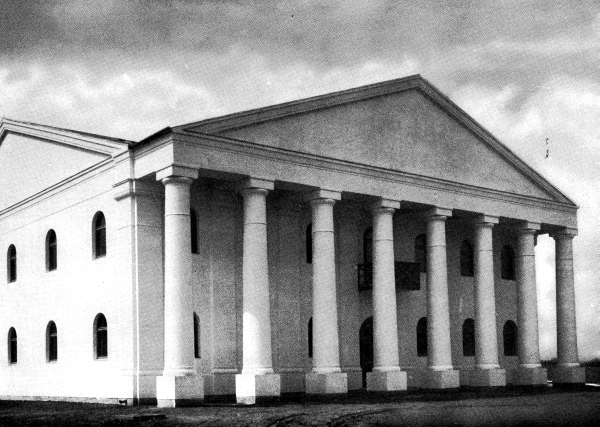Hungarian Socialist Realism Going on its Own Way
An Invisible Story
Text: Ádám Sylvester

Tolna, Cultural Centre, 1952, architect: Béla Pintér
Between the two world wars, Hungarian architecture managed to keep pace with international trends. It was a powerful presence in the world, in the background of CIAM also CIRPAC was founded to orchestrate talented designers cooperated supported by an excellent construction industry, and during the war genuine architectural gems were born in Budapest. Post-war reconstruction could have brought about the introduction of the Soviet-type socialist realist architecture which would have been a powerful dictatorship of tastes. This was avoided by professionals, as they succeeded in getting the management of the socialist party to accept 19th-century Neo-Classicism as the style of Hungarian socialist realism with a witty twist.




